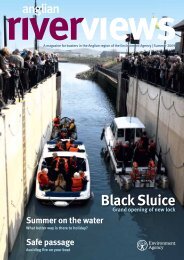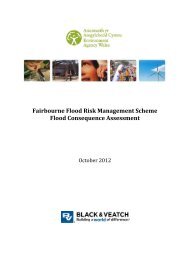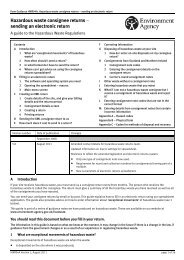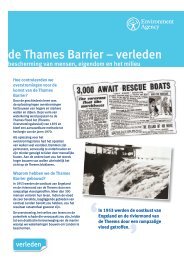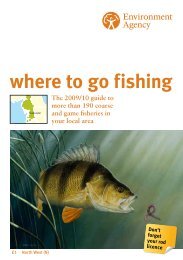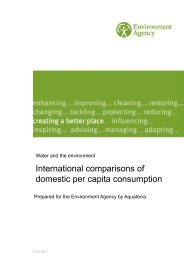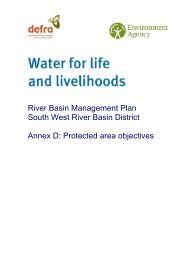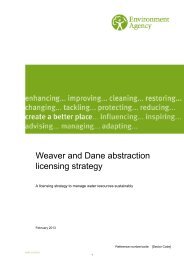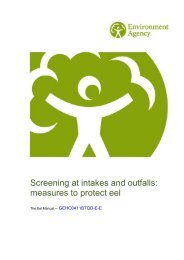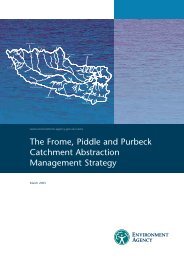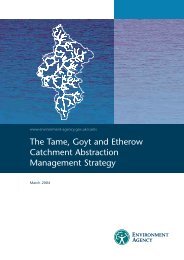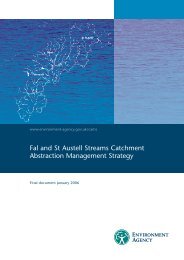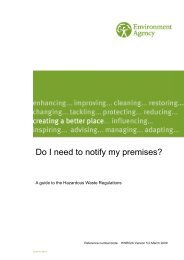Karenia mikimotoi
Karenia mikimotoi
Karenia mikimotoi
Create successful ePaper yourself
Turn your PDF publications into a flip-book with our unique Google optimized e-Paper software.
2.3.7 Other organisms associated with Phaeocystis colonies<br />
There are reports of other organisms associated with Phaeocystis colonies and foam<br />
and it is possible that these could give rise to irritation by dermal contact.<br />
Verity et al. (2007) highlight the work of Sahzin et al. (2007) who enumerated<br />
organisms associated with Phaeocystis pouchetii colonies growing in mesocosms in<br />
Norway and in blooms of P. globosa in the English Channel.<br />
The surface of large ( >250 µm) P. pouchetii colonies were populated with Pseudonitzschia<br />
cf. granii var. curvata, which did not exceed 40 cells per colony, and to a<br />
lesser extent by other phytoplankton and protists. Pseudo-nitzschia delicatissima<br />
colonized the surface of large (>100 µm) Phaeocystis globosa colonies from the<br />
English Channel. The abundance of these diatoms reached 130 cells per colony and<br />
formed up to 70% of the total carbon associated with Phaeocystis cells during late<br />
bloom stages and it was suggested that the diatoms were able to utilize the<br />
polysaccharides in the colony matrix for growth.<br />
Armonies (1989) found that Phaeocystis foam in the Dutch Wadden Sea contained<br />
significant numbers of harpacticoid copepods, which are normally found as meiofauna<br />
in the upper sediment layers. It was not clear whether they had been passively<br />
entrapped or actively migrated. It is possible but unlikely that these could act as<br />
allergens.<br />
2.3.8 Effects on human health<br />
Phaeocystis is not generally considered a hazard to health: “These blooms are not<br />
directly detrimental to human health as are other toxic blooming algae” - a quotation<br />
from a Belgian scientific report (Anon., 2002a). References to any symptoms caused<br />
by Phaeocystis foam appear to be rare and anecdotal, for example, this statement from<br />
the Friends of the Earth Marinet website: www.marinet.org.uk/glossary.html<br />
“Children love to play in it. But beware - it can produce an irritating rash in allergic<br />
youngsters.”<br />
The national report for the Netherlands regarding HAB incidents in 2001, submitted to<br />
the ICES-IOC Working Group on Harmful Algal Bloom Dynamics (Anon., 2002b)<br />
includes this statement: “In August, swimmers at the ‘Hoek van Holland’ beach (in the<br />
Rhine outflow) reported skin irritations. Microscopic counts of a sample collected at this<br />
time indicated a Phaeocystis concentration of 4.0 x 10 9 cells.L -1 .”<br />
2.4 Emiliania huxleyi<br />
This cosmopolitan alga often forms massive blooms in many of the world’s seas and<br />
oceans, including the waters around the UK, producing spectacular satellite images<br />
due to the optical properties of its calcareous scales (coccoliths). It produces dimethyl<br />
sulphide (see Malin et al., 1993) as outlined in 2.3.2.<br />
Blooms are reported to be non-toxic (Jahnke, 1992) and the alga has been shown to<br />
be non-toxic in the Artemia brine-shrimp lethality bioassay (Rhodes et al., 1995, cited in<br />
Houdan et al., 2004). There appear be no reports in the scientific literature regarding<br />
known toxicity or other deleterious effects on humans via aspiration, dermal contact or<br />
aerosols.<br />
10 A Literature review of the potential health effects of marine microalgae and macroalgae



